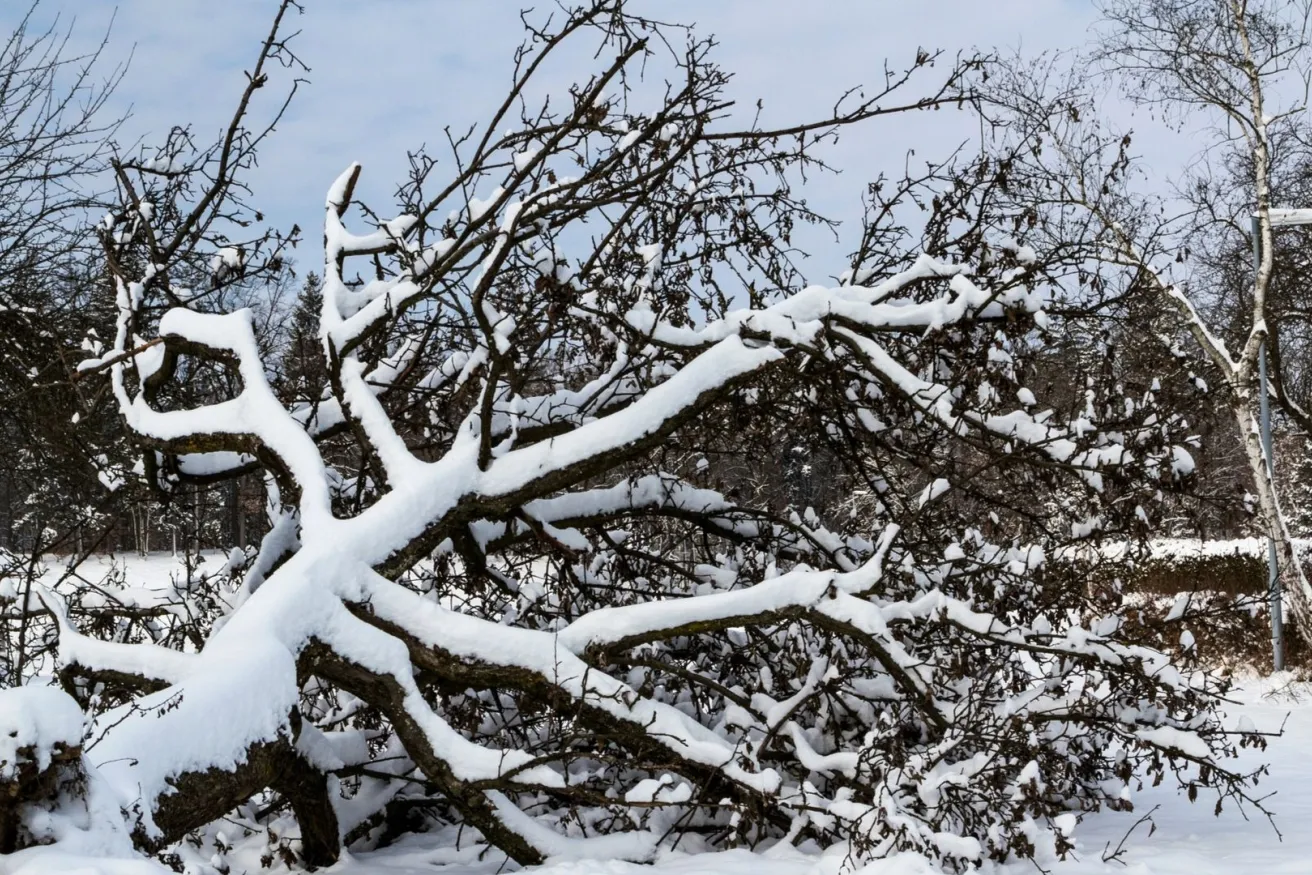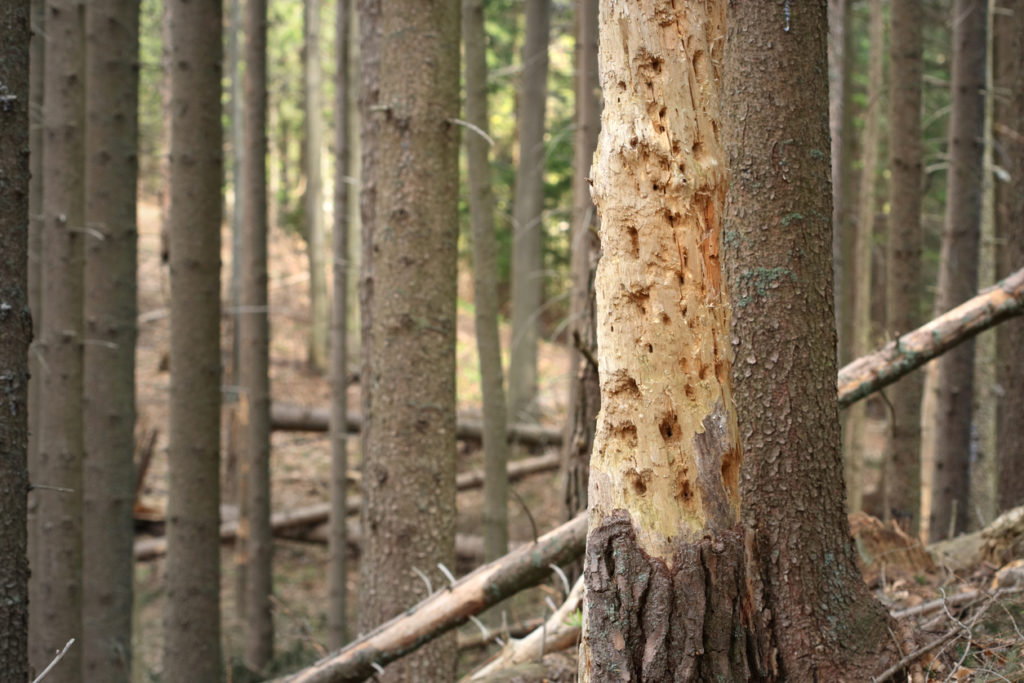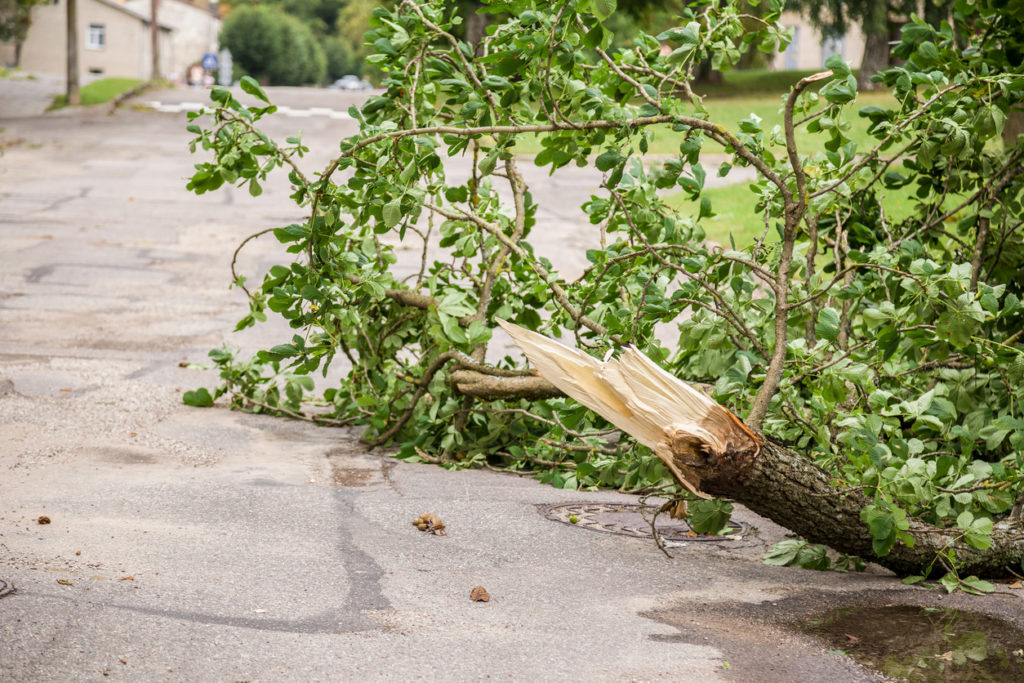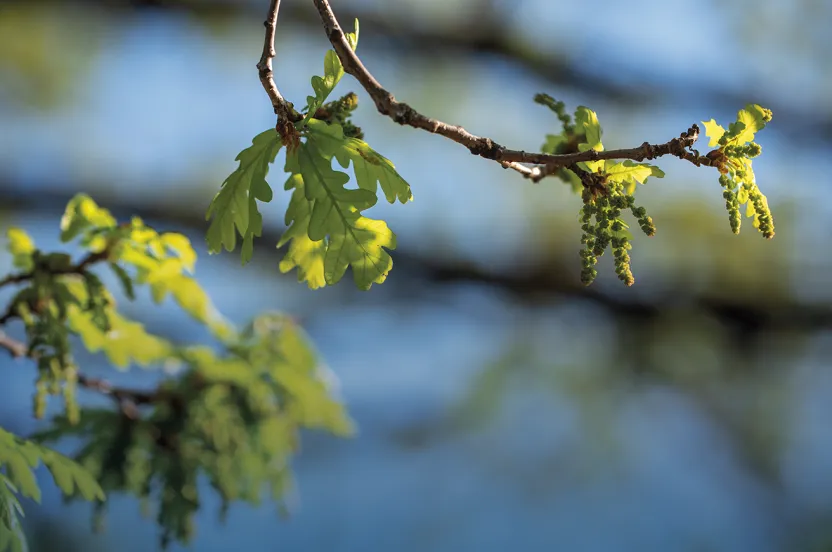Now live: The 2025 Canopy Report. Learn how Americans see trees. GET THE REPORT
Guest post by John Lang of Friendly Tree.
Most of us can agree that trees are good. They provide shade, shield us from wind, keep our homes cool, and add beauty and color to the landscape.
Trees truly are Mother Nature’s masterpieces. It’s easy to forget that trees – especially large, mature trees – can actually become a liability. Hazardous trees can cause thousands of dollars in damage, not to mention injury to people. Not all hazards are obvious, and often property owners don’t realize their tree is a hazard until a weather event exposes its weaknesses.
A tree’s owner is legally responsible for damage or injury that occurs because of tree failure. It’s up to you to exercise caution and due diligence when it comes to preventing dangerous situations caused by a hazardous tree.
What Causes a Tree to Fall?
A hazardous tree is defined as having a significant structural defect that may cause the tree or a portion of the tree to fall on someone or something of value.
Some tree failures are unpredictable; however, most can be prevented by properly inspecting your property for red flags. It’s especially important to inspect your trees before and after storms and heavy snowfall. Large trees are more likely to be hazardous than smaller trees.
During your inspection, pay attention to:
- Tree health
- Tree defects
- Improper pruning
- Site conditions
- Targets
Tree Health
The overall health of your trees can indicate structural problems. Factors to look for include foliage color (typical or atypical?), foliage density (are there bare spots?), infection (are there signs of disease?) and vigor (how does the tree look compared to other trees of the same species?). Large, dead branches, thin leaf cover, unusually shaped leaves and fungus are all warning signs that should be taken seriously.
Tree Defects
When looking for defects, inspect your tree from the crown, down the trunk and to the roots. An obvious sign your tree has a problem is dead wood in the tree’s crown. Dead branches in a tree’s crown are commonly referred to as “widow makers” because they pose a great threat to those below. Dead branches can fall even on a calm day, for seemingly no reason, with disastrous results.
Cracks or splits in the tree’s trunk – or trees with multiple trunks – have a high potential for failure. Trunk defects are relatively easy to spot and require a call to a certified arborist for further inspection.
A tree’s roots are perhaps the most important factor in terms of structure, but root defects tend to be difficult to spot. Even a tree that appears healthy can have serious problems below ground. Look around the base of the trunk for evidence of root defects. Mushrooms growing near the base of the tree or cracked or heaving soil can all point to root defects.
Improper Pruning
Improper pruning and lack of maintenance can also lead to the decline of a tree. Tree topping, especially, sets the stage for weak branches that can become a hazard.
Site Conditions
Construction and trenching within a tree’s root zone is a leading cause of hazardous trees. Roots extend at least two times the height of a tree, and when damaged, they lose their ability to support the tree.
The planting location can also have a great impact on a tree’s health and longevity. Large trees planted too close to structures or under power lines, in an area that retains water, or in soil poorly suited to the species can become hazards.
Targets
The term “target” is used to indicate the people and property that would be injured or damaged by a hazardous tree. A tree is usually only considered hazardous if its failure would impact someone or something. A tree located next to a driveway, near a sidewalk or leaning over a child’s play area, for example, would have a higher hazard rating than one on the outskirts of a property.
Know the Signs
There are some telltale signs of tree failure. If your tree exhibits any of the below warning signs, it’s time to call your local arborist.
- Your tree is leaning. Many trees don’t grow completely straight, but a tree that leans suddenly indicates a problem.
- The canopy appears sparse, unbalanced or has several dead branches.
- The trunk has cracks, cavities or decayed areas. Large pockets of decay can mean structural problems. Two vertical cracks on opposite sides of the tree can indicate root injury and is extremely dangerous.
- There are multiple trunks. Trees with multiple trunks are prone to breaking if one or more trunk is weakly attached.
- The soil at the base of the tree is buckling, cracking or heaving. This could mean a root problem.
- Fungi (mushrooms) are growing at the base of the tree. This is a sign of root decay.
When in Doubt, Contact Your Local Arborist
Sometimes a tree has serious issues but shows minimal warning signs. Thorough analysis by a certified arborist can determine a tree’s hazard potential.
Remember – prevention is the best solution. A healthy and happy tree that is properly maintained is far less likely to become a hazard than one that is ignored.
About the Author
John Lang is a Certified Arborist and a member of the Friendly Tree team, a family-owned New Jersey tree care service dedicated to the thoughtful and careful maintenance of your trees and shrubs. Friendly Tree Service has been in business for 28 years and remains passionate about trees and nature. With a highly trained staff that treats every property as their own and state of the art equipment, Friendly Tree is on the cutting edge of the art and science of Arboriculture.






